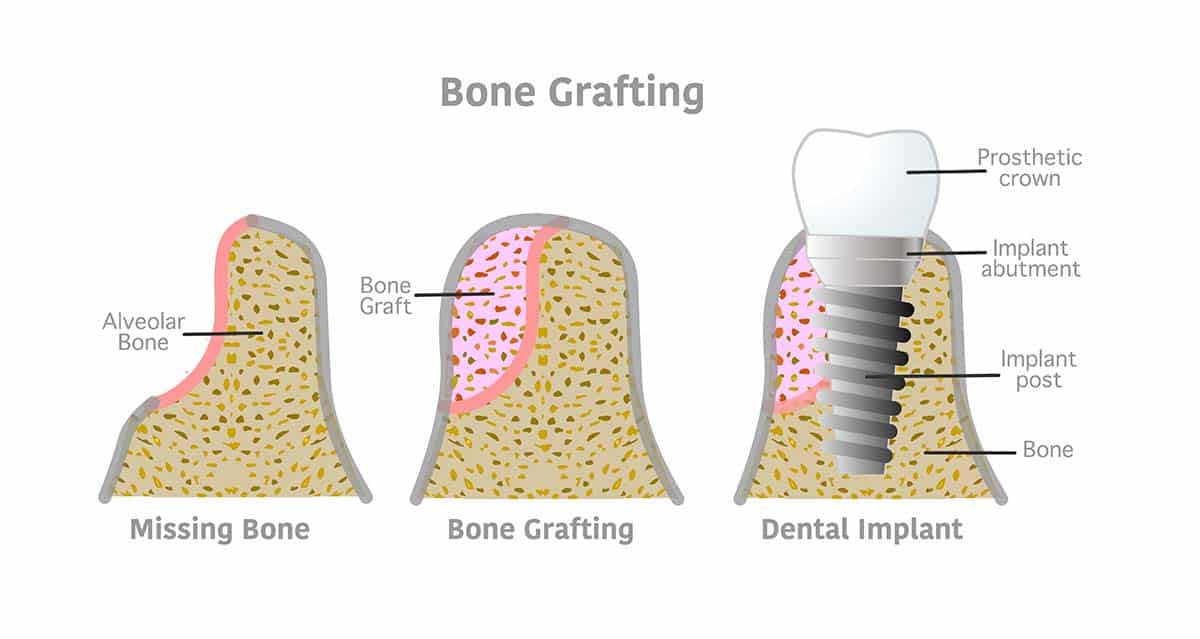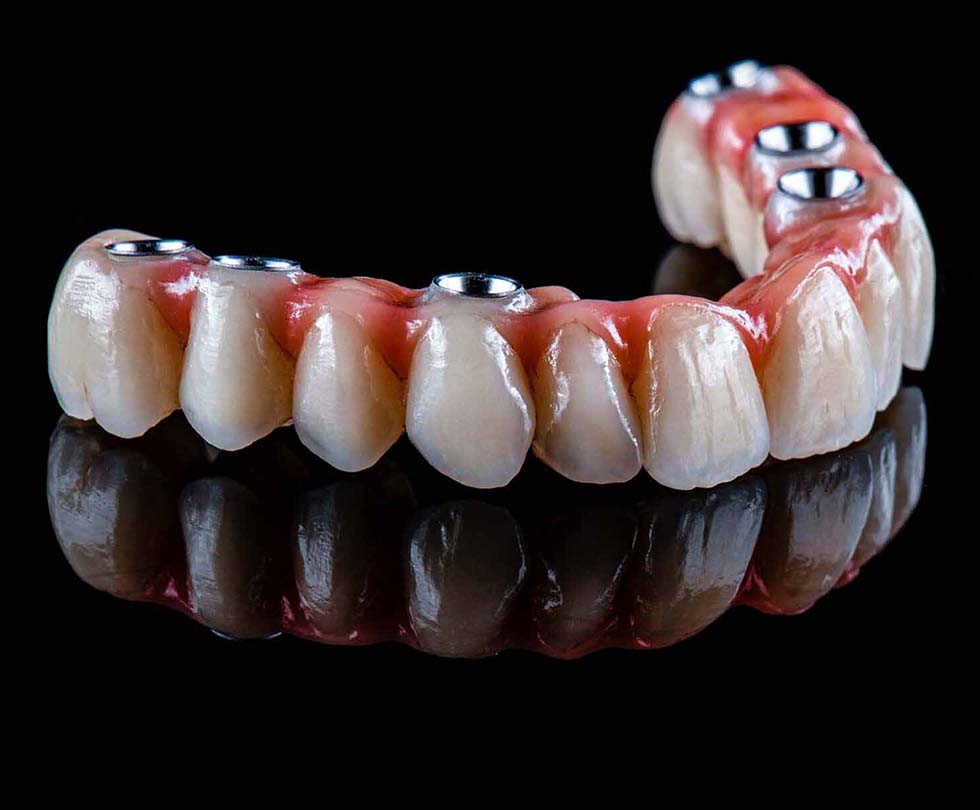Your Smile is Your Calling Card
Like it or not, your smile is one of the first things people notice about you, and if yours is full of missing, discolored, or damaged teeth, porcelain veneers or dental implants can offer you the help you need.
Just as a mouthful of pearly whites can help you make a dazzling introduction, teeth that are decayed, discolored, cracked, chipped, broken, or missing can leave the wrong first impression.
The good news is that modern dental technology offers a range of affordable, realistic, and permanent tooth replacement options for those experiencing severe tooth decay and loss. This article will discuss the pros and cons of two of the most common: dental implants vs. porcelain veneers.
Dental Implants vs. Veneers: Permanent Solutions to Permanent Problems
Did you know that approximately 35 million Americans are missing all their natural teeth? Once upon a time, removable dentures were the mainstay of tooth replacement, but nowadays increasing numbers of dental patients are seeking more durable, long-lasting alternatives.
Because dentures can be prone to cracking and breakage, and because only the most expensive models can be custom-fit to a patient’s mouth, many wearers find themselves stuck with ill-fitting and uncomfortable denture plates that affect their speech, chewing, and confidence.
In contrast, porcelain veneers bond directly to your natural teeth, preventing slippage and affording the wearer a more natural appearance. Dental implants are surgically embedded directly into the jawbone for even greater stability. And both give the wearer a more realistic appearance that’s indistinguishable from their natural teeth.
When comparing dental implants vs. veneers, it’s evident that both have advantages and limitations. However, depending on the circumstances, both can also help give you the smile you’ve always dreamed of.
Let’s take a more in-depth look at dental implants vs. veneers to find out what each has to offer.
Dental Implants: A Smile to Last a Lifetime
When choosing dental implants vs. veneers, it’s important to understand the function of each.
Dental implants can cure the wearer of cosmetic problems associated with missing or decaying teeth, but they also have several critical non-cosmetic functions including assisting with chewing and speech. Because they take the place of the wearer’s natural teeth and because they aren’t removable like dentures, they must be installed by a skilled dental surgeon after a thorough evaluation.
Dental implant technology was pioneered by a Swedish orthopedic surgeon named Per-Ingvar Brånemark. Since their invention in 1965, dental implants have gone on to become one of the most popular and sophisticated tooth replacement options available today.
The implant procedure works via a process called osseointegration, which allows the implants’ titanium screws to be permanently embedded into the wearer’s jawbone. This creates a stable foundation where an artificial tooth or a bridge can be applied. The risk that the body will reject the implant as foreign material is so minimal that the current success rate of dental implants hovers around 98%!
Full mouth dental implants consist of three interconnected parts: an implant, an abutment, and a crown. First, the implant – a screw-like appliance commonly made of medical-grade titanium – is placed directly into the jawbone where it begins the process of osseointegration. Once this stage of the implant procedure is complete (this generally takes 2 – 6 months), an abutment is attached. This is the connector joining the crown to the implant. Finally, the crown (artificial tooth) itself is placed on top, filling in the gap once occupied by your natural tooth.
From beginning to end, full mouth dental implants generally take several months to complete. The duration of your recovery can vary and will depend on factors including overall health, the number of implants required, and the condition of your jawbone prior to surgery. In cases where severe bone loss is present, a bone graft may first be necessary before implants can be placed to ensure a stable enough foundation to support a crown.
One of the major advantages of dental implants is that they can replace as few as one or two missing teeth or an entire mouthful. In cases where total replacement is required, all on 4 dental implants are another popular alternative. Like traditional implants, they can replace all of your natural teeth, but all on 4 dental implants require only four points of connection to support your upper and lower prosthetics.
Because they must support more weight than individual implants, all on 4 implants require exceptionally strong and healthy teeth and gums for successful osseointegration. Not every patient will be a viable candidate even with bone grafting, so it’s important to discuss your options with your Los Angeles dentist before seeking treatment.
Porcelain Veneers: A Less Invasive Solution
If you aren’t keen on the idea of dental surgery, or if you’re simply seeking to correct the appearance of your teeth rather than to replace them altogether, porcelain veneers are a wonderful option that can totally transform the look of your smile.
Unlike implants, which are surgically embedded into the jaw, veneers are essentially thin porcelain shells designed to mimic the appearance of your natural teeth. They are bonded to the front of your teeth and can easily correct cosmetic problems like discoloration, chips, crooked and misshapen teeth, and gapping. In some instances, they can also be used to correct bite problems and other more pervasive issues.
Before porcelain veneers can be applied, your dentist will probably remove a small amount of enamel from the front of each tooth. This creates extra space in your mouth for the veneers to ensure a natural appearance. Next, your dentist will take an impression of your prepared teeth, which is then sent to a dental lab. Here your custom-fit veneers will be made!
While you wait for your veneers to be ready, your dentist will likely give you a set of temporary resin veneers to wear so you have time to adjust to the new look and feel. At your next visit, your porcelain veneers will be placed over your teeth, your dentist will ascertain that the fit is correct and make any necessary adjustments before bonding them in place.
Like implants, veneers can be used to correct the appearance of only one or two teeth, or the appearance of your whole smile can be improved with full mouth veneers.
You should note that because they’re attached with glue rather than surgically embedded into the jaw, it is possible for veneers to come loose over time. For that reason, they won’t be a viable option for every patient, particularly those who clench or grind their teeth in their sleep, as this can cause unwanted shifting and breakage.
What Do Dental Implants Cost vs. Veneers?
Dental implants and veneers are both custom-made to fit the patient’s mouth, which means no two sets will ever be totally identical. This means the cost of each can vary considerably based on factors including how many teeth must be replaced, whether any supplementary procedures (such as bone grafting) are necessary, what the patient’s insurance covers, and more.
According to the New York Times, one individual dental implant can cost anywhere from $3000 to $4500, and a full mouth can run you as much as $34,000. All on 4 implants can be comparably costly, ranging from $20,000 to $30,000 for total replacement.
Some wearers, concerned by the expensive price tag, may seek “budget implants” or enlist the services of a non-credentialed dental surgeon. Though these options may seem more affordable on the surface, shoddy workmanship and poorly made materials can cost you even more in the long run, as well as jeopardize your dental health.
Additionally, it’s important to keep in mind that if your implants are deemed a medical necessity, it’s likely that most or all of the cost will be covered by your insurance. It’s advisable to talk to your Los Angeles dentist as well as your insurance provider to find out what sort of services your coverage includes. You may be pleasantly surprised!
[see: Dental Implants Cost in Los Angeles]How Much Do Veneers Cost?
Dental implants cost vs. veneers are typically more expensive. However, veneers should not be considered a cheap option. Because they are crafted for the most natural possible appearance and custom-fit to your individual teeth, you can expect to pay more than you would for removable dentures.
What veneers cost depends on where you live and what your insurance coverage, but generally speaking you can expect to pay anywhere from $1000 to $4000 per individual veneer, and as much as $80,000 for a full mouth.
Your dentist will be able to give you more information about dental implants vs. veneers, so you can choose the option that’s best for your needs and budget and take the first steps on your journey toward a more beautiful smile.
[see: Veneers Cost in Los Angeles]














